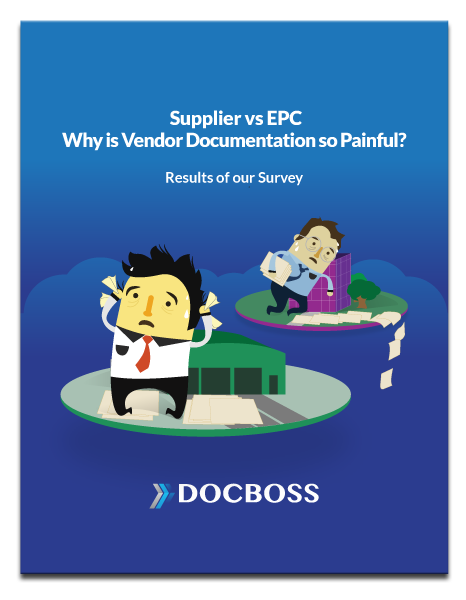
Quickly Uploading Documents to DocBoss
Check out the short video below to see how easy it is to drag and drop projects documents into DocBoss.

Last year we conducted a survey entitled Supplier vs EPC: Why is Vendor Documentation so Painful? We surveyed 106 respondents – 45 suppliers of process equipment and 61 EPCs – and asked them about their biggest pain points with regards to document control and determined how they can each do the work better.
Here are the three main areas of improvement for process equipment suppliers to focus on to handle document control more efficiently.
Deliverables management
Suppliers must have all documentation requirements clearly defined at the bid stage to ensure there is no confusion upon project completion and to ensure an exact understanding of what documentation formats are required. Insist on a brief kickoff meeting to discuss document control specifics. Define the requirements and set expectations up front.
Procedures/Training
A lack of proper execution leads directly to more stringent submission requirements on the next project. It is our assumption that formal procedures are not common at supplier organizations. We suggest suppliers need to put more focus on building formal document control procedures, just like any other core process. A simple process map created with key stakeholders would increase the visibility of the work, and allow suppliers to identify gaps in process, and clarify escalation points. The maturity or procedures (or lack thereof) is a topic for the next survey(lack of procedures).
Revenue
Suppliers of manufactured equipment should identify document services separately from the equipment cost. While documentation is integral to the supply of engineered equipment, manufactured equipment is different, and the workload can be intense on capital projects. With many documents required for every unit, these projects can see thousands of documents flowing for hundreds of units. With project orders generally commanding a reduced price per unit, suppliers have little room to invest in quality documentation preparation and management.
Of interest, the survey results show that EPCs generally expect to be billed for documentation work because they understand it is time-consuming, has value, and is part of the required deliverable.
You can download the full PDF report at no charge by clicking here.
DocBoss is the only true document control system for
suppliers. Book a quick demo to see how we help process
equipment suppliers make more profit with less pain.